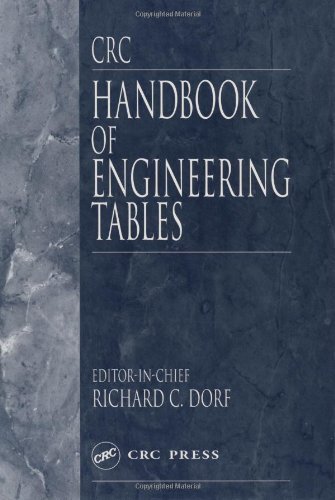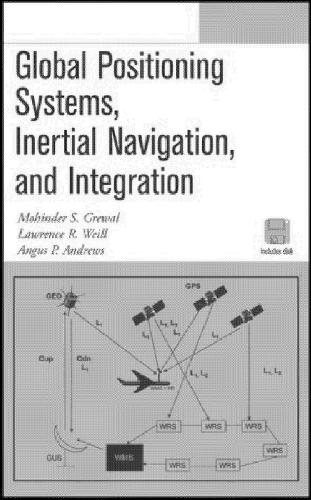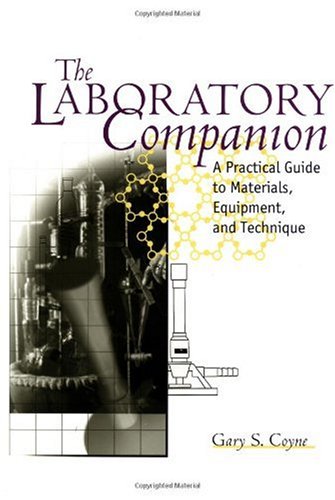Richard C. Dorf0849315875, 9780849315879
Table of contents :
CRC HANDBOOK OF ENGINEERING TABLES……Page 3
Acknowledgement……Page 5
Dedication……Page 6
Editor-in-Chief……Page 7
Original Source Page……Page 8
Table of Contents……Page 10
Table of Contents……Page 0
SECTION 1: Electrical and Computer Engineering……Page 23
Parameters and Characteristics of Discrete Capacitors……Page 29
Types of Systemwide Protection Equipment Available to Facility Managers and the AC Line Abnormalities That Each Approach Can Handle……Page 30
Typical Resistivity of Common Soil Types……Page 31
Specifications of Standard Copper Wire……Page 32
Parameters of Some Second-Generation Cellular Standards……Page 33
CSDB Physical Characteristics……Page 34
Sensor Data Required for Full Flight Regime Operation……Page 35
Categorization of Fault-Tolerant Software Techniques……Page 36
The Discipline of Biomedical Engineering……Page 37
Hematocytes……Page 38
Plasma……Page 39
Arterial System……Page 40
Venous System……Page 41
Typical Lung Volumes for Normal, Healthy Males……Page 42
Conductivity Values for Cardiac Bidomain……Page 43
Typical Values and Estimates for Young’s Modulus E……Page 44
Biomedical Signals……Page 45
Amplitudes and spectral range of some important biosignals……Page 46
Summary of Several Types of Wavelet Bases for L2(R)……Page 47
Upsilon´ Index of Various Capacitors……Page 48
Capacitors……Page 49
Inductor Qualifiers and Attributes……Page 50
Inductance L0 of Various Air Inductors Dimensionally Similar but Having the Same Number of Turns……Page 51
Basic characteristics of magnetic materials essential for inductor applications……Page 52
ITRS Microprocessor Roadmap……Page 53
Portion of the electromagnetic spectrum……Page 54
The Primary Strengths of Satellite Communications……Page 55
Boundary condition……Page 56
Code……Page 57
Sensor……Page 58
Cost of Selected Memory Devices……Page 59
DFT Parameters……Page 60
Typical underdamped unit-step response of a control system……Page 61
Sequences corresponding to various z-transform pole locations……Page 62
Transfer Functions of Dynamic Elements and Networks……Page 65
Block Diagram Transformations……Page 69
Transfer Function Plots for Typical Transfer Functions……Page 70
Characterization vs. Calibration……Page 78
Some Basic DTFT Pairs……Page 79
Properties of the DTFT……Page 80
Properties of the DFT……Page 81
Basic Parameters for Three Classes of Acoustic Signals……Page 82
Summary of the Functionalities and Characteristics of the Existing Standards……Page 83
Specific Energy of Batteries……Page 84
Fuel Cell Types……Page 85
Summary of Power Devices……Page 86
Comparison of Five Fuel Cell Technologies……Page 87
Basic fuel cell operation……Page 88
Most Commonly Found Relays for Generator Protection……Page 89
Typical Characteristics of Integrated Circuit Resistors……Page 90
Emissivities of Some Common Materials……Page 91
Thermal Conductivities of Typical Packaging Materials at Room Temperature……Page 92
“Hard” and “Soft” Magnetic Materials……Page 93
Standard Rectangular Waveguides……Page 94
Material Parameters for Several Semiconductors……Page 95
Absorption Loss Is a Function of Type of Material and Frequency (Loss Shown Is at 150 kHz)……Page 96
Filters provide a variety of frequency characteristics……Page 97
Radar Bands……Page 98
Ferroelectric, Piezoelectric, and Electrostrictive Materials……Page 99
Spontaneous Polarizations and Curie Temperatures for a Range of Ferroelectrics……Page 100
Electrical Properties of a Number of Representative Insulating Liquids……Page 101
Electrical and Physical Properties of Some Common Solid Insulating Materials……Page 102
Physical and Chemical Transduction Principles……Page 104
Typical Synchronous Generator Parameters……Page 105
Excitation Methods and Voltage Current Characteristics for DC Generators……Page 106
Complex Envelope Functions for Various Types of Modulation……Page 107
Protected Service Signal Intensities for Standard Broadcasting (AM)……Page 108
Comparison of Orbit and Link Parameters for LEO, MEO, and GEO for the Particular Case of Circular Orbits (eccentricity, e, = 0) and for Elevation Angle (el = 10°)……Page 109
Specifications of TDMA and CDMA Systems……Page 110
Binary-to-Decimal Conversion……Page 111
DFs of Single-Valued Nonlinearities……Page 112
Representative Transducers……Page 114
Classifications of Chemical Biomedical Sensors……Page 115
Wiring Board Material Properties……Page 116
Interconnect Models……Page 117
Parameters for Multimode and Single-Mode Fiber……Page 119
Common Tests for Optical Fiber……Page 120
Cable Interconnects……Page 121
The Electromagnetic spectrum……Page 122
Properties of Magnetic Materials and Magnetic Alloys……Page 123
Summary of capacitor properties……Page 124
Frequency Response Magnitude Functions for Chebyshev LP Prototype Filters……Page 125
Op–amp Circuits……Page 126
Operating Characteristics of Common Battery Types……Page 130
Example Fourier Transform Pairs……Page 131
Frequency Allocations for FSS (Below ~30 GHz)……Page 132
Table of Laplace Operations……Page 133
Table of Laplace Transforms……Page 134
Properties of Fourier Transform……Page 154
Table of Fourier Transforms (x = t, y = w)……Page 155
Common Fourier Transforms……Page 179
Important Properties of Laplace Transforms……Page 180
Power Definitions (Single-Phase Circuits)……Page 181
Summary of Describing Differential Equations for Ideal Elements……Page 182
Properties of the Wave Types for Time-of-Flight Measuring……Page 183
Comparison of Strain Sensors……Page 184
Pressure-sensing elements……Page 185
The key elements of mechatronics……Page 186
Power and Energy Variables for Mechanical Systems……Page 187
Typical Coefficient of Friction Values……Page 188
Mechanical Kinetic Energy Storage Elements (Integral Form)……Page 189
Type of Sensors for Various Measurement Objectives……Page 190
Type of Actuators and Their Features……Page 192
Performances of Two Deep-Sea Armored Coaxes……Page 193
Nominal geographical spans of access, metro-core/regional, and long-haul networks……Page 194
ITU-T-approved hand assignment in the low attenuation window of the silica fibers……Page 195
Fiber Optics Chemical Sensors……Page 196
(a) Thyristor symbol and (b) volt-ampere characteristics……Page 197
(a) GTO symbol and (b) turn-off characteristics……Page 198
Total Elongation at Failure of Selected Polymers……Page 199
Density of Selected Materials, mg/m3……Page 200
Applications in the Microwave Bands……Page 201
Typical Luminance Values……Page 202
Properties of Magnetic Materials and Magnetic Alloys……Page 203
Variation of Electrical and Thermal Properties of Common Insulators As a Function of Temperature……Page 204
Common Op-Amp Circuits……Page 205
Modulation Schemes, Glossary of Terms……Page 209
Radar Bands……Page 210
Thermal Coefficient of Linear Expansion of Some of the Materials Used in Microwave and RF Packaging Applications (at Room Temperature, in 10–6/K)……Page 211
Selected Material Properties of Semiconductors for Microwave and RF Applications……Page 212
Channel Designations for VHF and UHF Television Stations in the U.S…….Page 213
Common-Carrier Microwave Frequencies Used in the U.S…….Page 214
Representative Specifications for Various Types of Flexible Air-Dielectric Coaxial Cable……Page 215
Summary and Comparison of Second-Generation TDMA-Based System Parameters……Page 216
Comparison of High-Permittivity Constant Materials for DRAM Cell Capacitors……Page 217
Comparison of Selected Important Semiconductors of Major SiC Polytypes with Silicon and GaAs……Page 218
MEMS Processing Technologies……Page 219
Wafer Bonding Techniques……Page 220
Microrelays……Page 221
Thermal and Electrical Properties of Materials Used in Packaging……Page 222
Voltage Buffer Performance……Page 223
Recent high-speed ADC applications……Page 224
Comparing Electrical Parameters for BJT/HBT vs. FET……Page 225
Benefits of Using Renewable Electricity……Page 226
Electromagnetic Radiation and Stable Elementary Particles……Page 227
Electromagnetic Frequency Spectra……Page 228
Dynamic Response of RCL System to a Step-Change Input……Page 229
Amplitude Response — Second-Order System……Page 230
Phase Response—Second-Order System……Page 231
Frequency-Response Approximations and Corrections……Page 232
Corrections to the Log Magnitude and Phase Diagram……Page 233
Block and Signal-Flow Diagrams……Page 234
Block-Diagram Manipulations……Page 235
Signal-Flow Diagrams……Page 237
Root Loci……Page 240
Transfer Function Plots for Typical Transfer Function……Page 246
SECTION 2: Civil and Environmental Engineering……Page 254
Properties of Dressed Lumber……Page 256
Beam Formulas……Page 257
Phases in the value engineering job plan……Page 258
Maximum Contaminant Concentrations Allowable in Drinking Water (Action Levels)……Page 259
National Ambient Air Quality Standards……Page 263
Standard Normal Probability……Page 264
Typical Values of Elastic Modulus and Poisson’s Ratio for Granular Soils……Page 265
Representative Applications and Controlling Functions of Geotextiles……Page 266
Physical Properties of Air at Standard Atmospheric Pressure in English Units……Page 267
Physical Properties of Common Gases at Standard Sea-Level Atmosphere and 68°F in English Units……Page 268
Typical Physical Properties of and Allowable Stresses for Some Common Materials (in U.S. Customary System Units)……Page 269
Typical Physical Properties of and Allowable Stresses for Some Common Materials (in SI System Units)……Page 270
Some Distribution Types……Page 271
Properties of Some Lightweight Concretes……Page 272
Mechanical Properties of Hardened Concrete……Page 273
Total Target Air Content for Concrete……Page 274
Beam formulas for one-, two-, and three-span conditions……Page 275
Selected Earthquakes Since 1900 (Fatalities Greater than 1,000)……Page 276
Selected U.S. Earthquakes……Page 279
Earthquake loss process……Page 281
Earthquake risk management decision process……Page 282
Three levels of analysis in the EIA process……Page 283
Public participation in environmental impact assessment……Page 284
Main Membrane Separation Processes: Operating Principles and Application……Page 285
National Emission Standards for Hazardous Air Pollutants……Page 286
Molecular and aerosol particle diameters……Page 290
Radon risk evaluation chart……Page 291
Representative Sound Pressures and Sound Levels……Page 292
Estimated Distribution of World’s Water……Page 293
Hydrogen Storage Properties for a Range of Metal Hydrides……Page 294
Thermodynamic Data for Selected Chemical Compounds……Page 295
Shear force and bending moment diagrams for beams with simple boundary conditions subjected to selected loading cases……Page 296
Shear force and bending moment diagrams for built-up beams subjected to typical loading cases……Page 299
Typical loading on plates and loading functions……Page 301
Typical loading and boundary conditions for rectangular plates……Page 303
Typical loading and boundary conditions for circular plates……Page 304
Frequencies and Mode Shapes of Beams in Flexural Vibration……Page 305
Fundamental Frequencies of Portal Frames in Asymmetrical Mode of Vibration……Page 306
Basic weld symbols……Page 307
Strength of Welds……Page 308
Eurocode 4 Maximum Width-to-Thickness Ratios for Steel Webs……Page 309
Mechanical Properties of Steels Referred to in the AISI 1996 Specification……Page 310
Minimum Mechanical Properties……Page 312
Steel Plate Materials……Page 313
Mechanical Properties of Common Design Materials……Page 314
Properties of Sections……Page 315
Components of the Atmosphere……Page 317
Sound Transmission Through Partition Walls……Page 318
Sound-Absorption Coefficients……Page 319
SECTION 3: Chemical Engineering, Chemistry, and Materials Science……Page 320
2.1 SI derived units with special names and symbols……Page 322
2.1.1 Degree Celsius……Page 323
2.2 Use of SI derived units with special names and symbols……Page 324
4 Decimal multiples and submultiples of SI units: SI prefixes……Page 325
5.1.1 Hour, degree, liter, and the like……Page 326
5.1.4 Natural and atomic units……Page 327
5.2 Units temporarily accepted for use with the SI……Page 328
A.10 Steradian……Page 329
REFERENCE……Page 330
PERIODIC TABLE OF THE ELEMENTS……Page 342
Properties of Semiconductors……Page 343
Solid State Lasers……Page 364
III-V Material Systems with Important Optoelectronic Applications……Page 365
Important Parameters of Semiconductors of Interest for Conventional Electronics and Emerging High Temperature Electronics……Page 366
Properties of GaN(a), AIN(b), and InN(c)……Page 367
List of Ferroelectric Materials and Their Crystal Growth Methods……Page 368
General Physical Properties of Ferroelectric Materials……Page 369
Applications of the ferroelectric thin films……Page 370
Characteristics of Coaxial Cables……Page 371
Dry Saturated Steam: Temperature Table……Page 372
Properties of Superheated Steam……Page 374
Properties of Water at Various Temperatures from 40 to 540ºF (4.4 to 282.2ºC)……Page 378
Atomic Mass of Selected Elements……Page 379
Solid Density of Selected Elements……Page 381
Thermal Conductivity of Metals (Part 1)……Page 382
Thermal Conductivity of Metals (Part 2)……Page 383
Thermal Conductivity of Metals (Part 3)……Page 384
Thermal Conductivity of Metals (Part 4)……Page 385
General Properties of Refrigerants……Page 387
Thermodynamic Properties of Saturated Mercury……Page 389
Properties of Rare-Earth Metals……Page 390
Products of Powder Metallurgy……Page 391
Fiber-Reinforced Metals……Page 392
Properties of Commercial Plastics……Page 393
Rubbers and Elastomers……Page 404
Electrical Properties of Various Kinds of Glass……Page 406
Properties of the Chemical Elements……Page 407
Additional Properties of the Chemical Elements……Page 409
Available Stable Isotopes of the Elements……Page 412
Energy Absorption Mass Attenuation Coefficient In cm2/g……Page 415
Gamma-Ray Absorption Cross Section In cm–1……Page 416
Removal Cross Sections for Various Materials……Page 417
Diffusion of Gases and Vapors into Air……Page 418
Speed of Sound in Water and Steam (m·s–1)……Page 419
Dynamic Viscosity of Water and Steam (mPa·s)……Page 420
SECTION 4: Mechanical Engineering……Page 422
Basic Mechanical Properties……Page 424
Heating Values in kJ/kg of Selected Hydrocarbons at 25°C……Page 425
Physical Properties of Selected Ceramics……Page 426
Steel Pipe Sizes……Page 427
OTHER MATERIALS……Page 428
Summary of Definitions……Page 429
CAPP System Characteristics and Their Effects……Page 430
System’s view of the injection molding process……Page 431
Visualization of accuracy, repeatability, and resolution……Page 432
Denavit-Hartenberg Parameters of the Anthropomorphic Robot……Page 433
Examples of specialization of robot designs……Page 434
Typical arm and wrist configurations of industrial robots……Page 435
From industrial robots to service robots — the evolution of machine intelligence……Page 436
Scale of things, in meters. Lower scale continues in the upper bar from left to right……Page 437
Molecular and continuum flow models……Page 438
The operation range for typical MEMS and nanotechnology applications under standard conditions spans the entire Knudsen regime……Page 439
Classification of microrobots by functionality……Page 440
Tools for soft computing……Page 441
Saturated Steam, Water, and Ice — SI Units……Page 442
Viscosity and Thermal Conductivity of Steam and Water—SI Units……Page 444
Properties of Gases……Page 445
Mechanical Properties of Metals and Alloys……Page 455
Thermal Properties of Pure Metals—Metric Units……Page 467
Terms and Units for Radiant Energy and Illumination……Page 469
Blackbody Radiation……Page 470
Thermodynamic Nonflow Process Equations……Page 471
Thermodynamic Cycle Efficiencies……Page 472
Heat of Fusion of Some Inorganic Compounds……Page 473
II. Conservation Equations……Page 480
Energy Conversions……Page 486
Helical Steel Springs……Page 487
Ultrasonic Energy and Applications……Page 489
Mechanical Components……Page 490
Pneumatic Compensating Components……Page 492
Dynamic Elements and Networks……Page 494
Properties of Saturated Water and Steam (Temperature)……Page 497
Properties of Saturated Water and Steam (Pressure)……Page 502
Thermal Conductivity of Water and Steam (mW·m–1·K–1)……Page 508
SECTION 5: General Engineering and Mathematics……Page 510
Constants……Page 512
Powers of 10 In Hexadecimal Scale……Page 513
Factorials……Page 514
Prime Numbers……Page 515
Conversion: English to Metric……Page 516
Typical Values for Coefficients of Static Friction……Page 517
Properties of Plane Areas……Page 518
Moments of Inertia of Homogeneous Solids (m = Mass of Body Shown)……Page 519
Resistor Color Code……Page 523
Trigonometry……Page 524
Series……Page 528
Differential Calculus……Page 535
Integral Calculus……Page 539
Special Functions……Page 544
Approximate Current Densities in Electrons per Second per Square Nanometer Calculated from Experimental Data for Selected Molecular Electronic and Macroscopic Metal Devices……Page 553
Size and scale of naturally occurring structures as compared with human-made structures……Page 554
Trends in miniaturization of integrated circuits in the last 25 years……Page 555
Civilizations, technology periods (ages), and historical revolutions as a function of time……Page 556
Abbreviations……Page 557
Boiling Point Law, General……Page 558
Large Numbers, Law of (1689) (1713); Bernoulli Theorem (1713)……Page 559
Newton Laws of Motion (Three Laws) (1687); Laws of Dynamics……Page 560
Shannon Law or Formula or Theorem (1948)……Page 561
Snell Law (1613*, 1621); Snell Law of Refraction; Descartes Law……Page 562
Thermodynamics, Laws of (1847, 1850, 1851, 1906)……Page 563
Young Modulus, E……Page 564
Types of Manufacturing — Characteristics and Examples……Page 565
Coefficient of Friction—Identical Metals……Page 566
Coefficient of Friction—Identical Alloy Pairs……Page 567
Coefficient of Friction—Dissimilar Metals……Page 568
Coefficient of Friction—Single Crystals……Page 569
Coefficient of Friction—Non-Metals……Page 570
Coefficients of Static and Sliding Friction……Page 571
The Greek Alphabet……Page 573
Units and Their Conversion……Page 574
International System (SI) Metric Units……Page 576
Conversions to SI Units……Page 579
Fundamental Physical Constants……Page 588
Numerical Constants……Page 590
Mathematical Constants……Page 592
Derivatives……Page 593
Facts from Algebra……Page 596
Integrals—Elementary Forms……Page 597
Series……Page 599
Tables of Statistical Probability……Page 607
Ordinates and Areas for Normal or Gaussian Probability Distribution……Page 609
Student’s t-Distribution……Page 612
Chi-Square Distribution……Page 613
F-Distribution……Page 614
Binomial Distribution—Cumulative Probabilities: P……Page 618
Poisson Distribution—Cumulative Probabilities: P……Page 620
Critical Values for the Sign Test……Page 623
Factors for Computing Control Limits……Page 624
Number Systems and Change of Base……Page 627
Binary, Octal, and Decimal Numbers……Page 629
Octal-Decimal Integer Conversion……Page 631
Boolean Theorems……Page 635
Applications and Functions of Two Variables……Page 636







Reviews
There are no reviews yet.